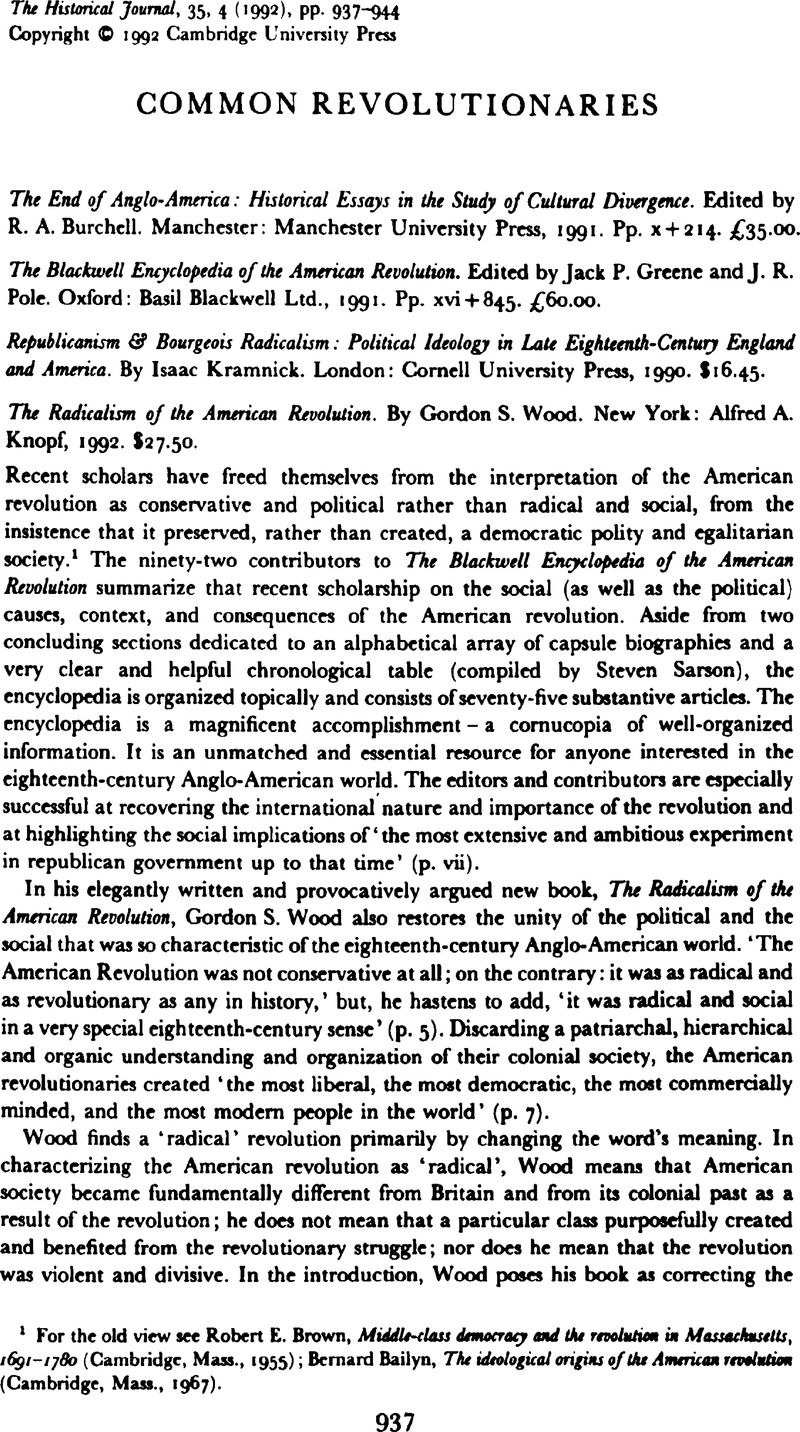No CrossRef data available.
Article contents
Common revolutionaries
Published online by Cambridge University Press: 25 March 2010
Abstract

- Type
- Review Articles
- Information
- Copyright
- Copyright © Cambridge University Press 1992
References
1 For the old view see Brown, Robert E., Middle-class democracy and the revolution in Massachusetts, 1691-1780 (Cambridge, Mass., 1955)Google Scholar; Bailyn, Bernard, The ideological origins of the American (Cambridge, Mass., 1967)Google Scholar.
2 For example, Morgan, Edmund S., ‘The second American revolution’, The New York Review of Books, XXXIX (25 06, 1992), 23–5Google Scholar.
3 Young, Alfred F., ed., The American revolution: explorations in the history of American radicalism (DeKalb, 1976)Google Scholar.
4 See also Bushman, Richard L., King and people in provincial Massachusetts (Chapel Hill, 1985)Google Scholar.
5 Foner, Eric, Tom Paine and revolutionary America (London, 1976)Google Scholar.
6 Countryman, Edward, ‘The uses of capital in revolutionary America: the case of the New York loyalist merchants’, The William and Mary Quarterly, third sen, XLIX (01 1992), 4Google Scholar.
7 He defends this convention in Wood, Gordon S., ‘Ideology and the origins of liberal America’, William and Mary Quarterly, third ser., XLIV (07 1987), 635–7Google Scholar.
8 Hatch, Nathan O., The democratization of American Christianity (New Haven, 1980)Google Scholar.
9 Pessen, Edward, Jacksonian America: society, personality, and polities (Homewood, 1978)Google Scholar ; Wilentz, Sean, Chants democratic: New York city and the risi of the American working class, 1788-1850 (New York, 1984)Google Scholar.
10 See also Beeman, Richard R., The evolution of the southern backcountry: a case study of Lunenberg county, Virginia, 1746-1832 (Philadelphia, 1984), pp. 186–299Google Scholar ; Frey, Sylvia R., ‘Liberty, equality, and slavery: the paradox of the American revolution’, in Greene, Jack P., ed., The American revolution: its character and limits (New York, 1987), pp. 230–59Google Scholar ; Stansell, Christine, City of women: sex and class in New York, 1789-1860 (New York, 1986), pp. 3–37Google Scholar.
11 Shurtleff, James quoted in Taylor, Alan, Liberty men and great proprietors: the revolutionary settlement on the Maine frontier (Chapel Hill, 1990), p. 105Google Scholar.


